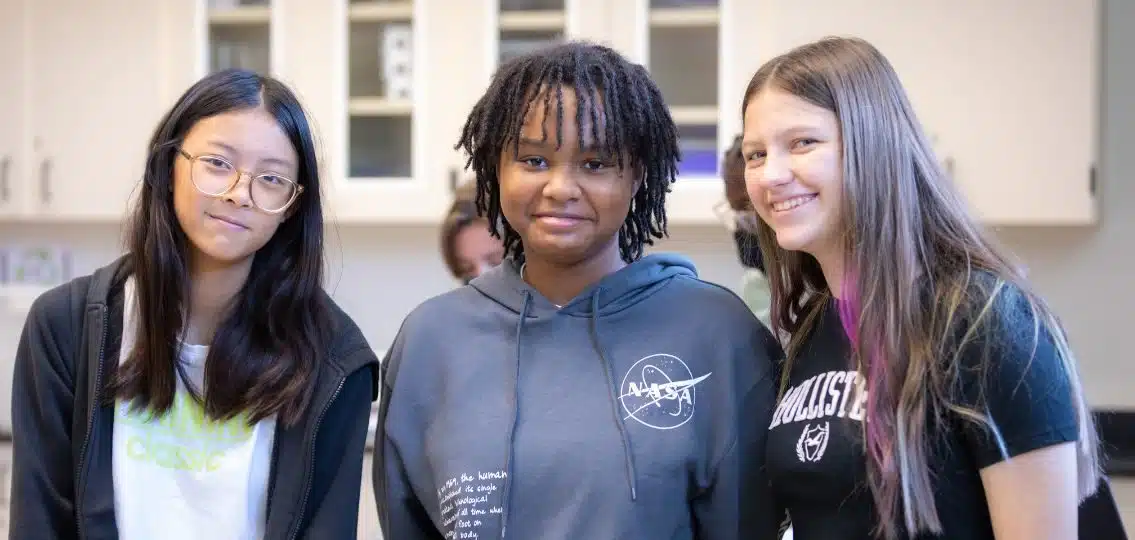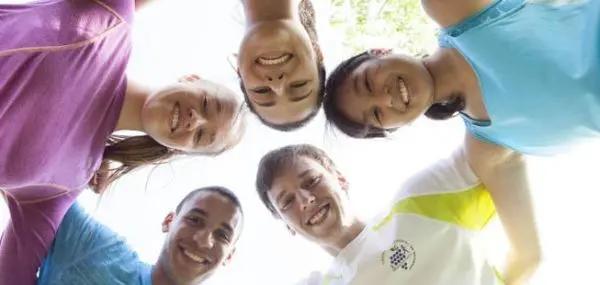In today’s world, giving kids a great education involves more than helping them achieve academic success. Great educators also teach kids to respect others’ ethnic identities and traditions. Beachwood City Schools, in Beachwood, Ohio, achieves these goals in thoughtful ways.
“There’s an opportunity for each of us to grow in terms of our intercultural awareness every day,” says Kevin Houchins, Beachwood’s director of equity and community engagement. “In part, that’s because the student population at Beachwood is a true melting pot: 43% White, 25% Black, 20% Asian, roughly 8% multiracial, and 4% Hispanic. I think we really gain a great deal of knowledge by learning from that multicultural community. We’ve had students from every continent except Antarctica. What better way to teach our students than in a global school?”
We develop cultural fluency and mutual respect when we encourage members in our diverse community to learn from one another.
Because Beachwood’s student body is so eclectic, kids develop cross cultural awareness simply by talking informally with their classmates. Teachers act as facilitators for these kinds of conversations in classrooms, as well. “It’s woven into the fabric of how instruction takes place,” Houchins says.
Besides casual and teacher-led conversation, students also make focused efforts to honor all cultures represented at Beachwood Schools and celebrate diversity in the classroom. At Beachwood High School, for example, a group of classmates founded the Many Cultures, One Bison program (named after their school’s mascot). Their premise is that though they are many cultures, they are all one bison. In other words, the club aims to create unity within diversity. Members pledge to respect people of all ethnicities, and to learn how to discuss differences between the school’s numerous ethnic populations in productive ways.
Other affinity groups are thriving at the high school, too, including the GSA (Gender and Sexuality Alliance) Club, and the MAC Scholars (Minority Achievement Committee Scholars). “All of our groups are open to anybody, but they do deal with specific issues for certain groups of people,” Houchins explains. Other groups formed more recently, like an Asian American students group, are catching on. “It’s something very new that organically happens,” Houchins says.
When diverse populations in our community come together, we discover our common goals.
Another way Beachwood honors cultural multicultural awareness is by organizing events that unite the entire community. One is the annual Bison Feast + Fest, where adults and children can sample a range of ethnic foods and enjoy performances of cultural dances. Another community event is called Common Ground.
“Common Ground was an event sponsored by The Cleveland Foundation. The day included discussions about how to develop opportunities for people to come together while ensuring everyone feels heard and respected,” Houchins adds.
Further conversations grew from the Common Ground event. People from different backgrounds learned they had similar concerns about their child’s education. “One thing that arose from this whole process was the fact that many people discovered they all shared some common desires in terms of what they wanted for their children’s education,” Houchins says. “Everyone wanted their children represented, and for them to be seen, listened to, and valued… People who thought their values and priorities were in opposition, found out that they weren’t.”
All parents need to feel like they belong and that their voices matter.
Affinity groups aren’t just for students. Beachwood encourages parents to form affinity groups, too. “A lot of the parent affinity groups are fairly new,” Houchins shares. “Two of them, a group for Indian American parents, and another group for Chinese American parents are already meeting. Latin American and African American parent groups are forming now.”
Houchins says the district encourages these group formations. “We want to support these groups, listen to what their members have to say, and ultimately use them as a feedback loop for our administrative team. That way, we can understand how a range of communities, people, and cultures experience our school system, and we can learn how to continue enhancing our environment so that everyone feels valued and respected,” Houchins says.
After noticing an increase in students’ absences during a cultural holiday, the administration sought the input of a group of Chinese American parents to pursue adding the observance to the school calendar. Xiaochong Sheng is the founder of the Asian American parents’ affinity group, which she formed in May 2022. She came up with the idea after Houchins invited her to an Equity & Engagement Team meeting, where parents of different cultures discussed what they want and need from Beachwood Schools.
“We discussed Chinese holidays that could be added to the school calendar, like the Lunar New Year. So then, Kevin asked me to talk to the other Chinese parents and ask what else they would like,” Xiaochong recalls.
“I thought, ‘I can’t speak to all of them individually, because there are too many people. I have to form a group that exclusively discusses school issues.’” Xiaochong sent out a message to friends and others she knew personally, and the news spread by word of mouth. Today the group has nearly 50 members, who discuss issues and address questions both large and small.
“People ask how their kids can join an afterschool club, because they’re intimidated by the club and they don’t know how to do that. Also, people ask about the curriculum. They receive their child’s schedule and ask if it needs to be changed — like one mother said her kid had fourth period off, and we told her it’s fine,” Xiaochong says.
Members also discuss issues to share with Houchins; for example, they asked whether the Mid-Autumn Festival (a holiday in China, Singapore, Korea, and Japan) could receive some recognition. “You’re not going to get a day off for it; but we can create a document about holidays and special events to help make teachers aware, and that they shouldn’t give too much homework around those certain days,” Xiaochong explains.
Cross-cultural communication helps foster respectful engagement and understanding.
Affinity groups like the Chinese parent group aren’t meant to work in isolation. Xiaochong plans for her affinity group to meet with other affinity groups soon. “We can have events with them so that we can talk. I think that would be good,” she says.
In large and small ways, Beachwood works hard to celebrate the different heritages, ethnicities, cultures, and customs of the people in the community it serves. They’ve shown us how important community is to round out an education. We’ve seen how open and respectful communication between parents, students, and the administration can increase a school district’s understanding of their community’s particular and fluid needs. These are helpful steps toward building a welcoming multicultural society.
Intentional efforts toward cultural fluency helps educators better serve all students and families in a school district. Beachwood Schools does it well.




